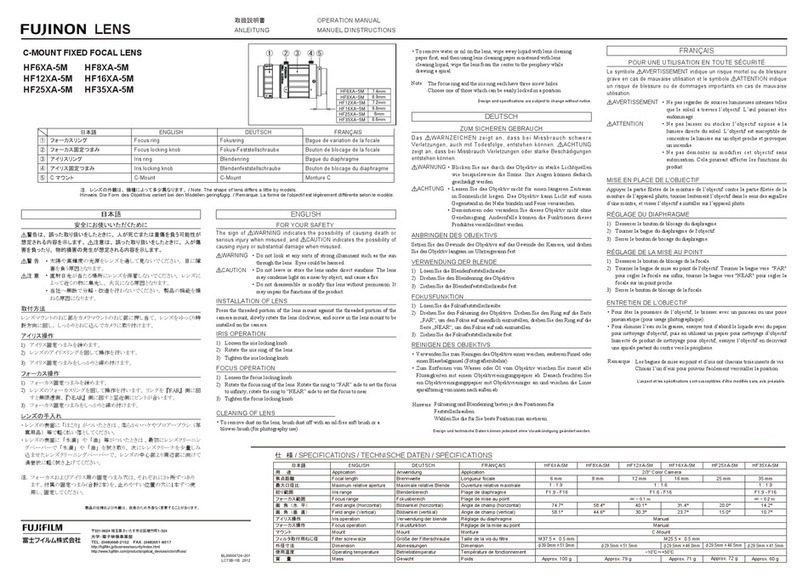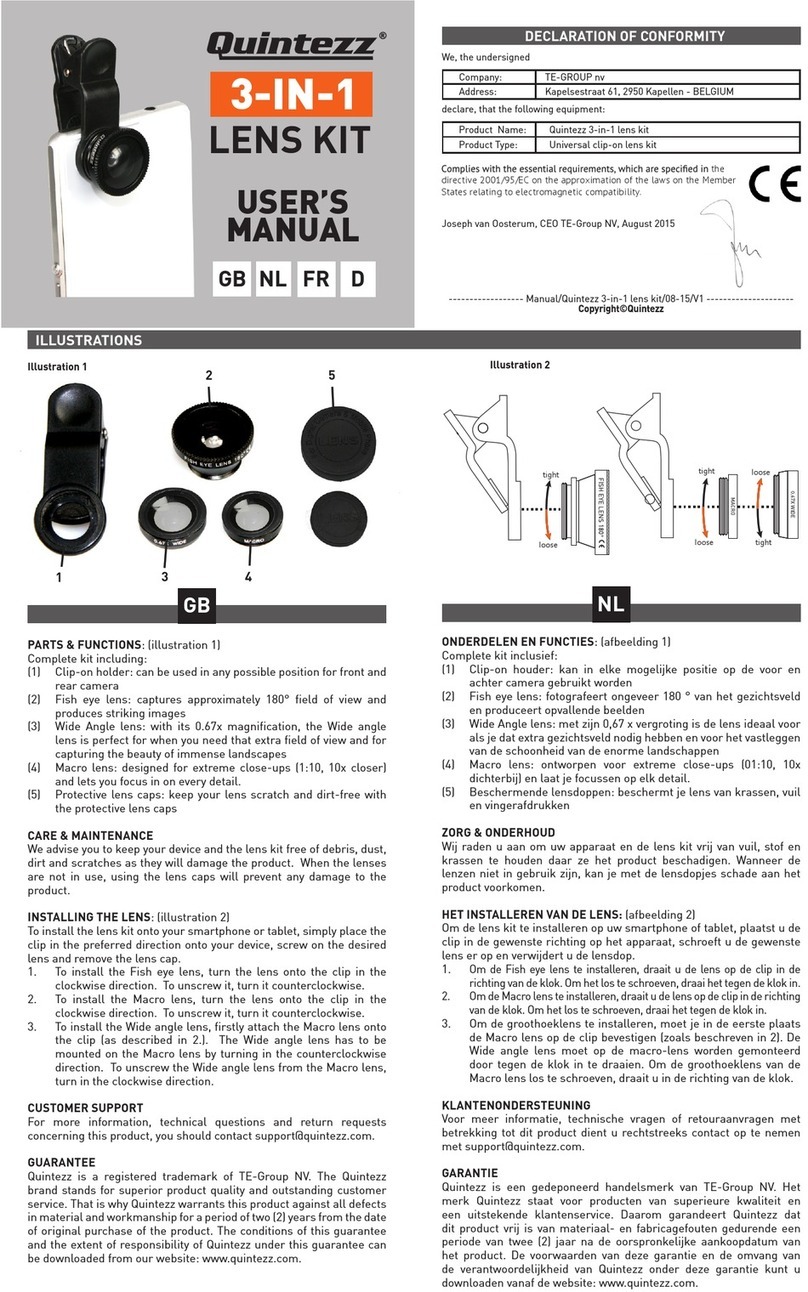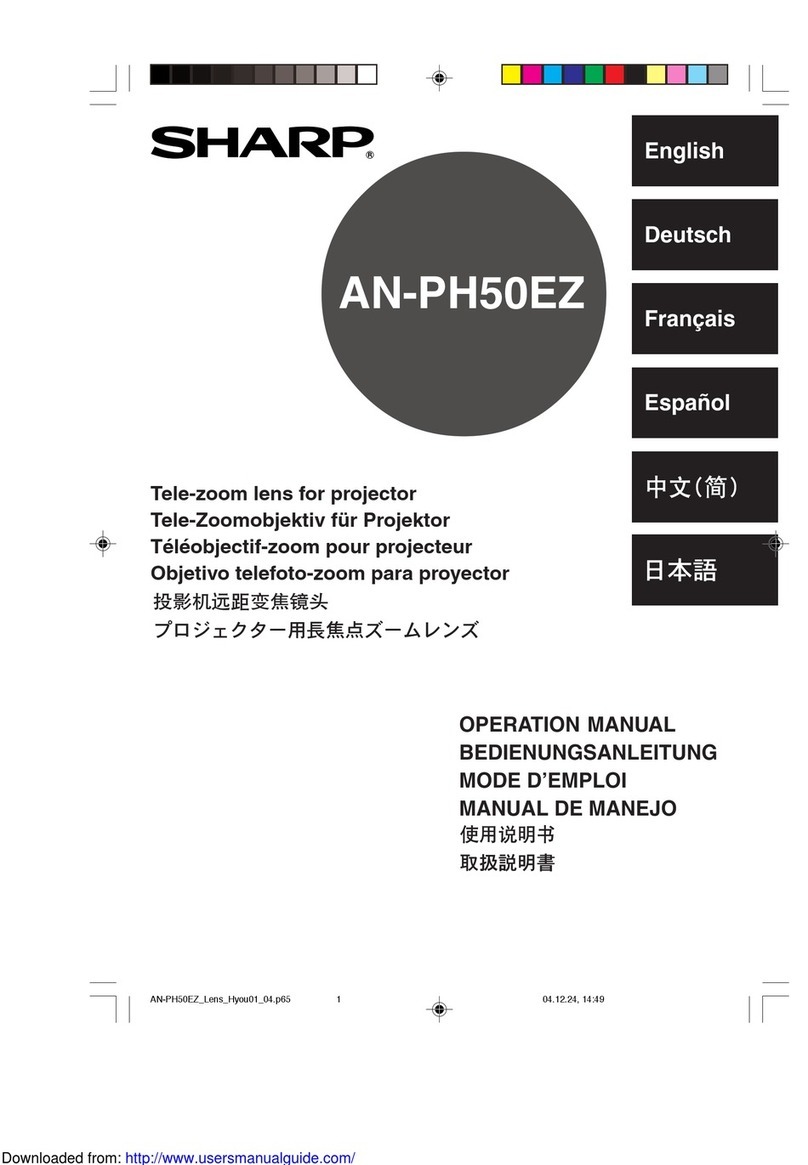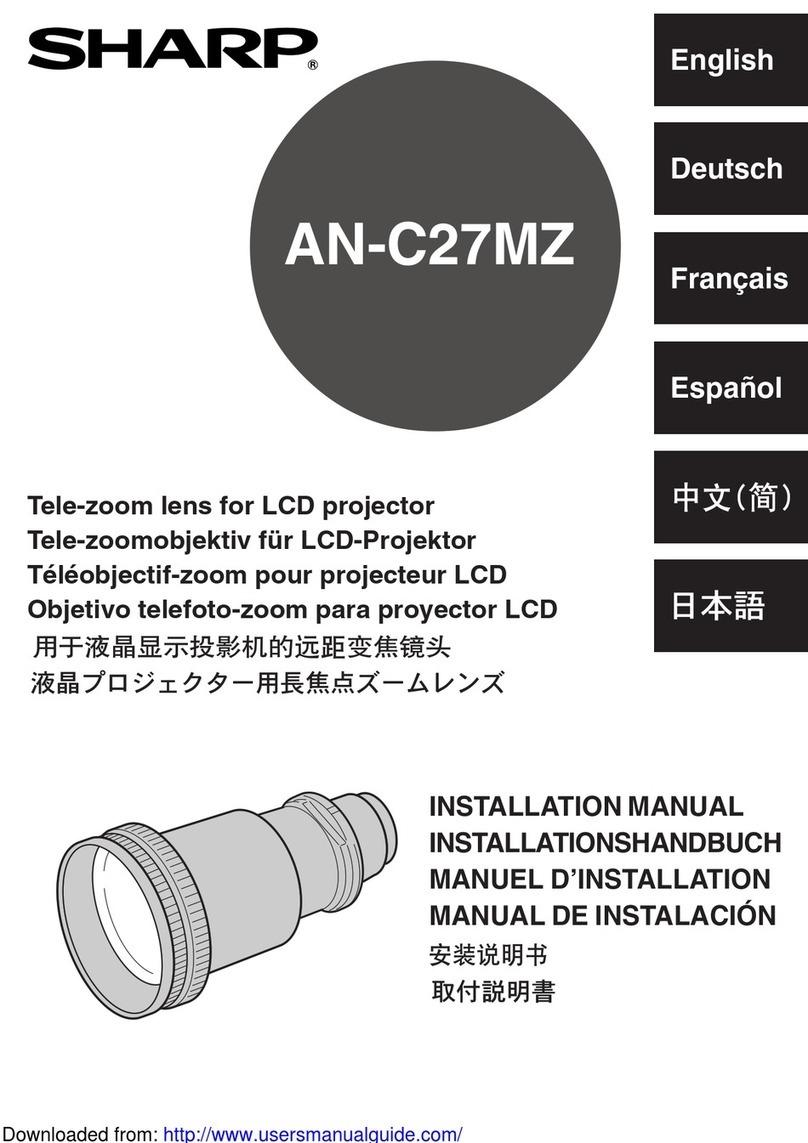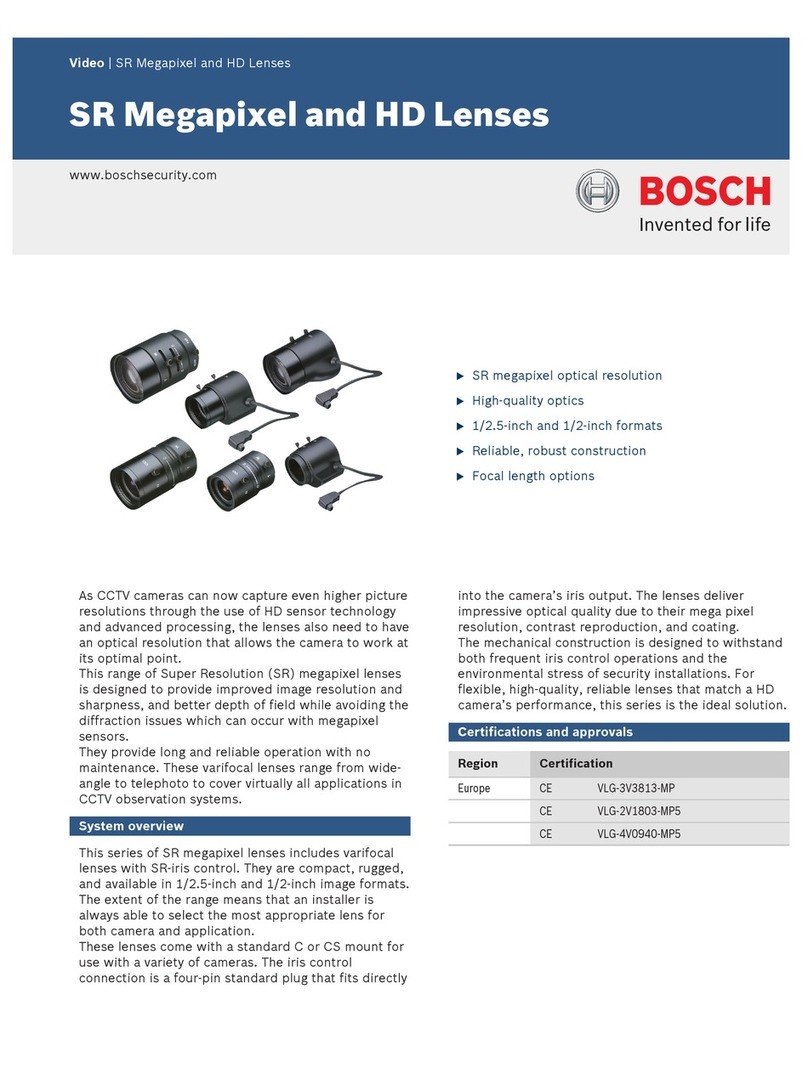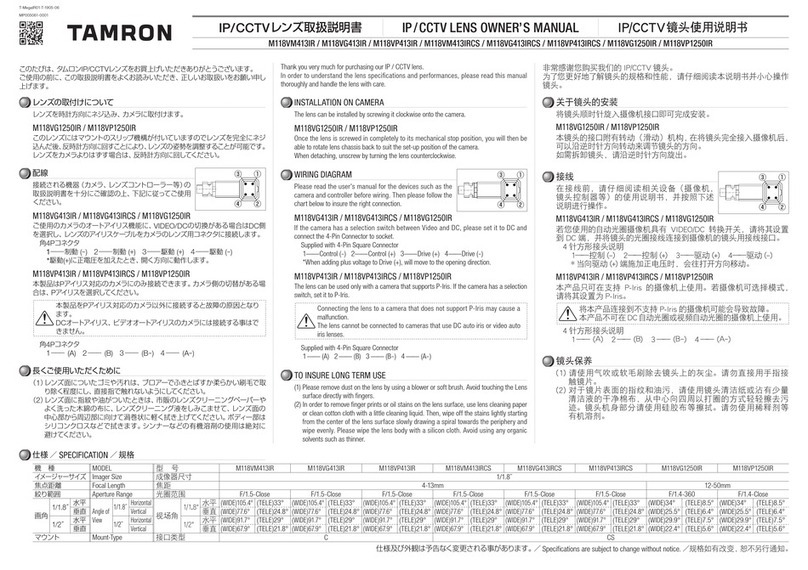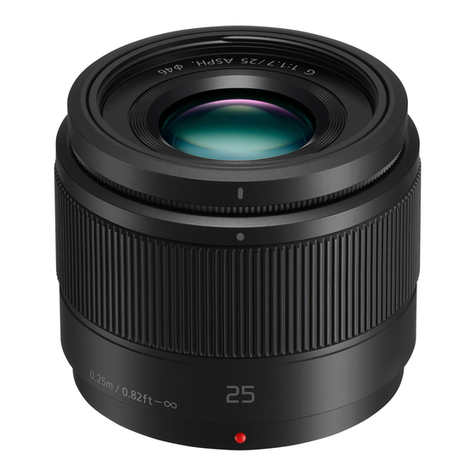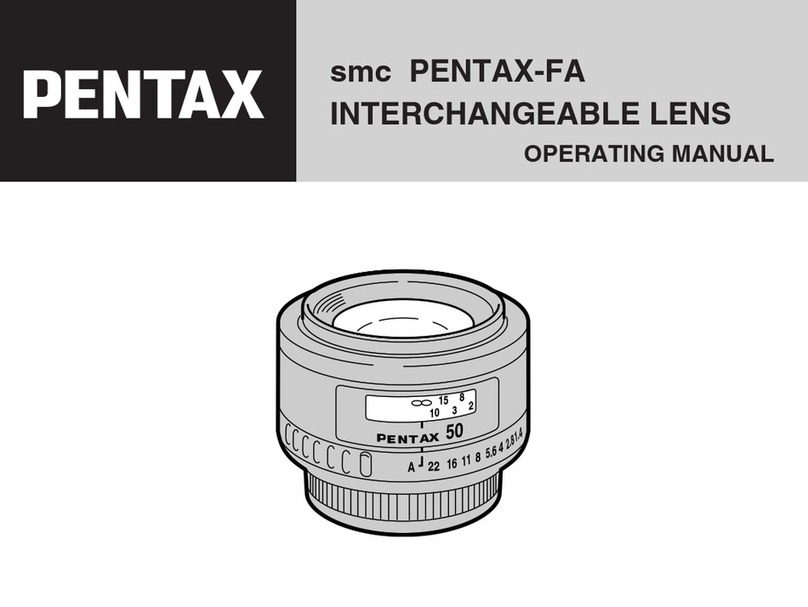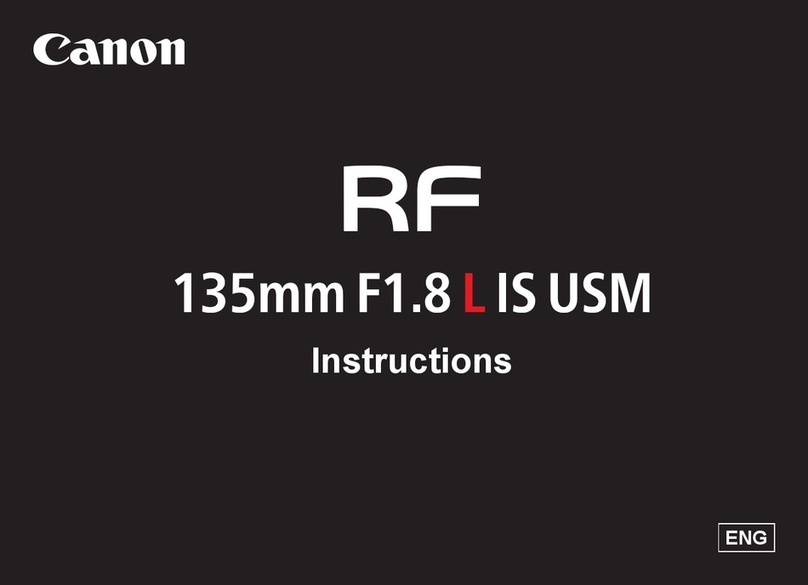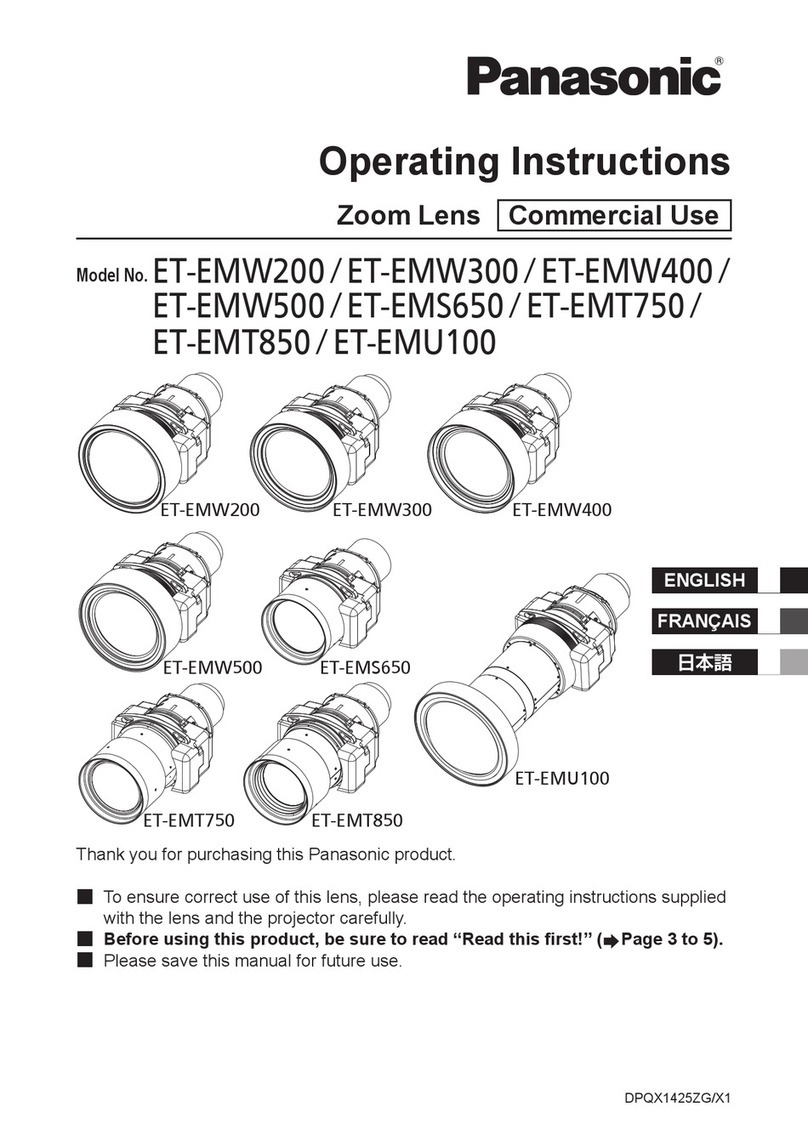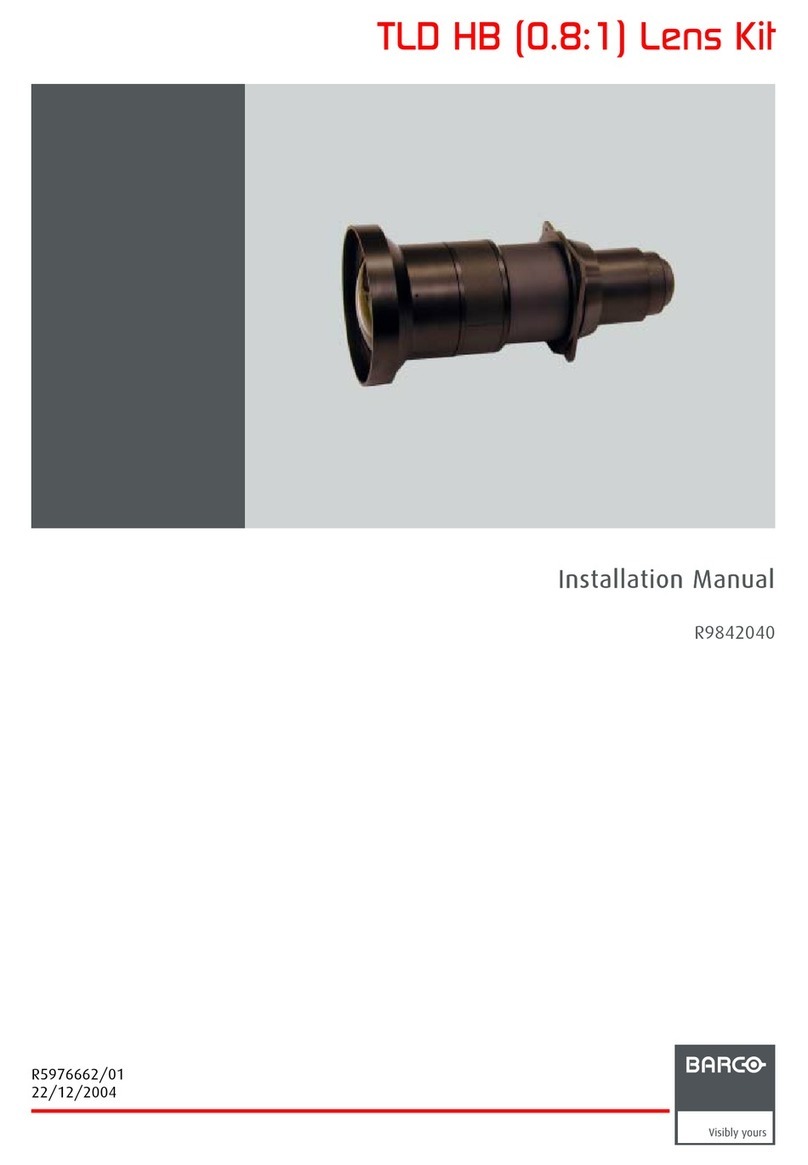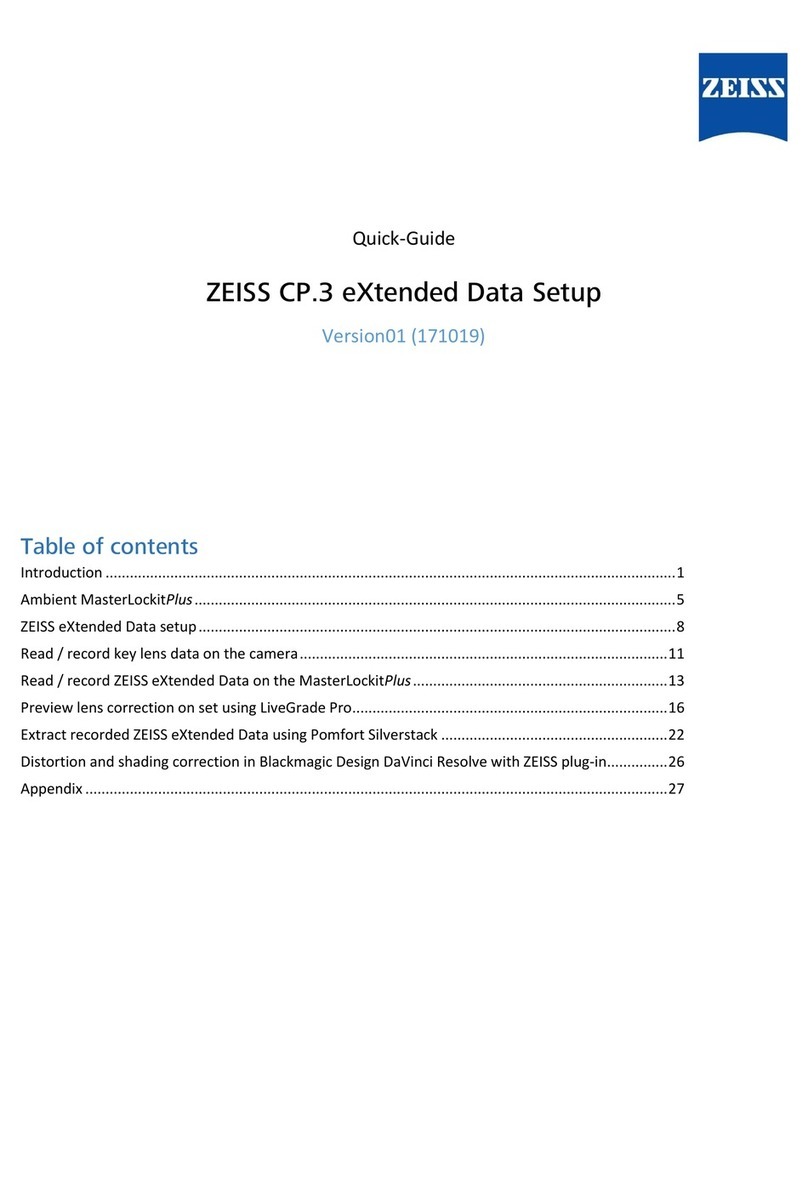Bausch & Lomb SofLens Toric alphafilcon A User manual

PATIENT INFORMATION BOOKLET
CAUTION: Federal (U.S.A.) law restricts this device to sale by or on the order of a licensed practitioner
Visibility Tinted Contact Lenses
SL7486
8002704

PATIENT INFORMATION BOOKLET
TABLE OF CONTENTS
Introduction .........................................................................................................................................................................................................................5
Wearing Restrictions and Indications....................................................................................................................................................................6
Contraindications (Reasons Not To Use)...........................................................................................................................................................6
Warnings...............................................................................................................................................................................................................................7
Precautions..........................................................................................................................................................................................................................7
Adverse Reactions (Problems and What To Do) .......................................................................................................................................... 8
Personal Cleanliness and Lens Handling........................................................................................................................................................... 8
Preparing the Lens for Wearing.................................................................................................................................................................. 8
Handling the Lenses.......................................................................................................................................................................................... 8
Placing the Lens on the Eye............................................................................................................................................................................9
Centering the Lens..............................................................................................................................................................................................9
Removing the Lens..............................................................................................................................................................................................11
Lens Wearing Schedules .............................................................................................................................................................................................11
Caring for Your Lenses (Cleaning, Rinsing, Disinfecting, Enzyming, Storage and Rewetting/Lubricating).................11
Basic Instructions..................................................................................................................................................................................................11
Chemical (Not Heat) Disinfection.............................................................................................................................................................12
Lens Deposits and Use of Enzymatic Cleaning Procedure........................................................................................................12
Lens Case Cleaning and Maintenance..................................................................................................................................................12
Care for a Sticking (Nonmoving) Lens...................................................................................................................................................12
Care for a Dried Out (Dehydrated) Lens..............................................................................................................................................13
Emergencies..........................................................................................................................................................................................................13
Lens Care Products Chart.........................................................................................................................................................................................14
Chemical Lens Care Systems......................................................................................................................................................................14
All Lens Care Systems......................................................................................................................................................................................14
Instructions for the Monovision Wearer.............................................................................................................................................................15
Wearing and Appointment Schedules................................................................................................................................................................16
Prescribed Wearing Schedule.....................................................................................................................................................................16
Appointment Schedule....................................................................................................................................................................................16
Personal Wearing Schedule Record....................................................................................................................................................................17
Check-Up Visits...............................................................................................................................................................................................................18
Eye Care Professional Information........................................................................................................................................................................18
Glossary of Medical Terms........................................................................................................................................................................................19
Symbol Reference Guide...........................................................................................................................................................................................19

5
The instructions in this booklet apply to the Bausch & Lomb SofLens® Toric (alphafilcon A) Visibility Tinted Contact
Lenses, when prescribed in a Frequent/Planned Replacement or Disposable Program. If you have received or
are considering another brand of contact lenses, do not use this booklet. Ask your eye care professional for the
patient booklet or instructions that apply to your brand or type of contact lenses. For Bausch & Lomb SofLens
Toric (alphafilcon A) Visibility Tinted Contact Lenses, it is essential to your safety that you read and understand the
information and instructions in this booklet, and have your eye care professional answer any questions, both before
and after you receive contact lenses.
Wearing contact lenses is different from wearing eyeglasses. Because they are worn directly on your eyes, contact
lenses affect the way in which your eyes function. These effects tend to increase with the length of time that the
lenses remain on your eyes between removals. Although the great majority of people successfully wear contact
lenses without problems, before you decide whether to begin or to continue wearing contact lenses for daily wear
or extended wear, you should discuss with your eye care professional the effects of contact lenses on your eyes
and the risks associated with wearing contact lenses, which are greater with extended wear contact lens use. You
also should read the sections of this booklet entitled “Warnings,” “Adverse Reactions,” “Precautions,” and “Wearing
Restrictions and Indications.” Ask your eye care professional to explain anything that you do not understand,
including any additional restrictions which may be given to you by your eye care professional.
You also need to remember that soft contact lenses, including those covered by this booklet, are made of a type of
plastic that absorbs liquids, vapors, and small particles, and, for some people, may collect deposits from your natural
eye fluids. Therefore, you should strictly follow the instructions contained in the sections of this booklet entitled
“Personal Cleanliness” and “Lens Handling”, as well as the written information leaflets accompanying the lens care
products that you buy and any other instructions given to you by your eye care professional. Any failure to follow
these instructions and the wearing restrictions will increase the chances of contamination, damage to the lenses, or
a build-up of deposits on the lenses, which can lead to serious, sight-threatening eye infections and injuries.
Adherence to your prescribed wearing and replacement schedule, and regular check-up visits to your eye care
professional are also necessary for the proper and safe use of contact lenses. It is important not to wear your lenses
longer than recommended by your eye care professional since doing so increases the risk of adverse events.
Spaces are provided in the back of this booklet for you to record your personal wearing schedule and schedule of
follow-up visits. Soft contact lenses generally are comfortable from the beginning.
Therefore, be sure to follow the wearing schedule prescribed for you, and do not overwear your lenses simply
because they remain comfortable and you are not experiencing a problem. Only your eye care professional,
through a professional examination, can determine how your eyes are reacting to the contact lenses and whether
there are any early signs of possible problems.
If problems or symptoms should occur, immediately remove your lenses and follow the steps described in the
section of this booklet entitled “Warnings” and “Adverse Reactions.” Prompt attention to problems is essential and
may require immediate professional care.
Remember, when wearing soft contact lenses your eyes should look and feel good, and your vision should be clear.
INTRODUCTION

6
WEARING RESTRICTIONS
AND INDICATIONS
Bausch & Lomb SofLens Toric (alphafilcon A) Visibility
Tinted Contact Lens is indicated for daily wear or
extended wear from 1 to 7 days between removals
for cleaning and disinfection or disposal of the lens, as
recommended by the eye care professional. The lens
is indicated for the correction of refractive ametropia
(myopia, hyperopia, and astigmatism) in not-
aphakic persons with non-diseased eyes, exhibiting
astigmatism of up to 5.00 diopters or less, that does
not interfere with visual acuity. The lens may be
prescribed for Frequent/Planned Replacement Wear
or Disposable Wear in spherical powers ranging from
+6.00D to -9.00D when prescribed for up to 7 days
of extended wear and from +20.00D to –20.00D for
daily wear.
Note: See the WARNINGS reference to the relationship between
lens wearing schedule and corneal complications
FREQUENT/PLANNED
REPLACEMENT WEAR
When prescribed for Frequent/Planned Replacement
Wear, the Bausch & Lomb SofLens Toric (alphafilcon
A) Visibility Tinted Contact Lens is to be cleaned,
rinsed and disinfected each time it is removed
from the patient’s eye and discarded after the
recommended wearing period prescribed by the eye
care professional. The lens may be disinfected using a
chemical disinfection system.
DISPOSABLE WEAR
When prescribed for Disposable Wear, the Bausch
& Lomb SofLens Toric (alphafilcon A) Visibility Tinted
Contact Lens is to be discarded after each removal.
WEARING RESTRICTIONS
The Bausch & Lomb SofLens Toric (alphafilcon A)
Visibility Tinted Contact Lenses described in this
booklet should be removed from your eyes for routine
cleaning and disinfecting as prescribed by your eye
care professional. For extended wear once the
lenses are removed, your eyes should have a rest
without lens wear for at least one overnight, as
recommended by your eye care professional.
Your eye care professional will tell you how long to rest
your eyes in between wearing periods and will also
recommend a replacement period and appropriate
lens care products.
CONTRAINDICATIONS
(REASONS NOT TO USE)
DO NOT USE the Bausch & Lomb SofLens Toric
(alphafilcon A) Visibility Tinted Contact Lens when any
of the following conditions exist:
• Acute and subacute inflammation or infection of the
anterior chamber of the eye
• Any eye disease, injury, or abnormality that affects
the cornea, conjunctiva, or eyelids
• Severe insufficiency of lacrimal secretion (dry eyes)
• Corneal hypoesthesia (reduced corneal sensitivity)
• Any systemic disease that may affect the eye or be
exaggerated by wearing contact lenses
• Allergic reactions of ocular surfaces or adnexa
(surrounding tissue) that may be induced or
exaggerated by wearing contact lenses or use of
contact lens solutions
• Allergy to any ingredient, such as mercury or
Thimerosal, in a solution which is to be used to care
for the Bausch & Lomb SofLens Toric (alphafilcon
A) Visibility Tinted Contact Lens
• Any active corneal infection (bacterial, fungal, or
viral)
• If eyes become red or irritated

7
WARNINGS
You should be aware of and fully discuss with your eye
care professional the following warnings pertaining to
contact lens wear:
• Problems with contact lenses and lens care
products could result in serious injury to your
eye. It is essential that you follow your eye care
professional’s direction and all labeling instructions
for proper use of lenses and lens care products,
including the lens case. Eye problems, including
corneal ulcers, can develop rapidly and lead to
loss of vision.
• Strict compliance with your care regimen including
cleaning of the lens case, wearing restrictions,
wearing schedule, and follow-up visit schedule must
be followed.
• Studies have shown that contact lens wearers who
are smokers have a higher incidence of adverse
reactions than nonsmokers.
• If you experiences eye discomfort, excessive
tearing, vision changes, or redness of the eye, you
should immediately remove lenses and promptly
contact your eye care professional.
EXTENDED WEAR
• The risk of microbial keratitis has been shown to
be greater among users of extended wear contact
lenses than among users of daily wear contact
lenses. The risk among extended wear lens users
increases with the number of consecutive days that
the lenses are worn between removals, beginning
with the first overnight use. Some researchers
believe that these complications are caused by
one or more of the following: a weakening of
the cornea’s resistance to infections, particularly
during a closed-eye condition, as a result of
hypoxia; an eye environment which is somewhat
more conducive to the growth of bacteria and
other microorganisms, particularly when a regular
periodic lens removal and disinfecting or disposal
schedule has not been adhered to by the patient;
improper lens disinfection or cleaning by the
patient; contamination of lens care products;
poor personal hygiene by the patient; patient
unsuitability to the particular lens or wearing
schedule; accumulation of lens deposits; damage
to the lens; improper fitting; length of wearing time;
and the presence of ocular debris or environmental
contaminants. While the great majority of patients
successfully wear contact lenses, extended
wear of lenses also is reported to be associated
with a higher incidence and degree of epithelial
microcysts and infiltrates, and endothelial
polymegathism, which require consideration of
discontinuation or restriction of extended wear.
The epithelial conditions are reversible upon
discontinuation of extended wear.
PRECAUTIONS
You should be aware of and fully discuss with your eye
care professional the following lens care regimen and
safety precautions:
Specific Precautions
• Always discard disposable lenses and lenses worn
on a frequent/planned replacement schedule after
the recommended wearing schedule prescribed by
the eye care professional.
Handling Precautions
• Always wash and rinse hands before handling
lenses. Do not get cosmetics, lotions, soaps,
creams, deodorants, or sprays in the eyes or on the
lenses. It is best to put on lenses before putting on
makeup. Water-base cosmetics are less likely to
damage lenses than oil-base products.
• Before leaving your eye care professional’s office
be certain that you are able to remove your lenses
promptly or have someone else available to remove
them for you.
• Be certain that the fingers or hands are free of
foreign materials before touching your lenses, as
microscopic scratches of the lenses may occur,
causing distorted vision and/or injury to the eye.
• Always handle your lenses carefully and avoid
dropping them.
• Do not touch the lens with your fingernails.
• Carefully follow the handling, insertion, removal,
cleaning disinfecting, storing and wearing
instructions in this booklet and those prescribed by
your eye care professional.
• Never use tweezers or other tools to remove your
lenses from the lens container unless specifically
indicated for that use. Pour the lens into the hand.
Solution Precautions
• Always use fresh unexpired lens care solutions.
• Always follow directions in the package inserts for
the use of contact lens solutions.
• Sterile unpreserved solutions, when used, should
be discarded after the time specified in the labeling
directions.
• Always keep the lenses completely immersed in
the recommended storage solution when lenses
are not being worn (stored). Prolonged periods
of drying will damage lenses. Follow the lens care
directions for Care for a Dried Out (Dehydrated)
Lens if lens surface does become dried out.
• Do not use saliva or anything other than the
recommended solution for lubricating or wetting
lenses.
• Tap water, distilled water or homemade saline
should not be used as a substitute for any
component in the lens care regimen since they
have been associated with an Acanthamoeba
keratitis infection.

8
• Never use conventional hard contact lens solutions
that are not also recommended for use with
prescribed lenses.
• Do not mix or alternate lens care systems or
solutions unless indicated in the lens care system
labeling.
• Do not use chemical disinfection solutions with heat
unless specifically indicated on product labeling for
use in both heat and chemical disinfection.
Lens Wearing Precautions
• Never wear your lenses beyond the period
recommended by your eye care professional.
• If the lens sticks (stops moving) on the eye, follow
the recommended directions on Care for a Sticking
(Nonmoving) Lens. The lens should move freely
on the eye for the continued health of the eye. If
nonmovement of the lens continues, you should
immediately consult your eye care professional.
• Avoid, if possible, all harmful or irritating vapors and
fumes when wearing lenses.
• If aerosol products are used while wearing lenses,
exercise caution and keep eyes closed until the
spray has settled.
Lens Case Precautions
• Contact lens cases can be a source of bacterial
growth. To prevent contamination and to help avoid
serious eye injury, always empty and rinse the lens
case with fresh, sterile rinsing solution and allow to
air dry.
• Lens cases should be replaced at regular intervals
as recommended by the lens case manufacturer or
eye care professional.
Topics to Discuss with the
Eye Care Professional
• As with any contact lens, follow-up visits are
necessary to assure the continuing health
of the eyes. You should be instructed as to a
recommended follow-up schedule.
• Patients should be advised about wearing lenses
during sporting and water related activities.
Exposure to water while wearing contact lenses
in activities such as swimming, water skiing and
hot tubs may increase the risk of ocular infection
including but not limited to Acanthamoeba keratitis.
• Always contact your eye care professional before
using any medicine in the eyes.
Who Should Know That the Patient
is Wearing Contact Lenses
Inform your doctor (health care professional) about
being a contact lens wearer.
• Always inform your employer of being a contact
lens wearer. Some jobs may require the use of eye
protection equipment or may require that you not
wear lenses.
Ask your eye care professional whether there are
any other wearing restrictions that apply to you. Write
those restrictions in the spaces provided below and
follow them carefully:
_______________________________________
_______________________________________
_______________________________________
_______________________________________
_______________________________________
_______________________________________
_______________________________________
_______________________________________
_______________________________________
_______________________________________
_______________________________________
_______________________________________
_______________________________________
_______________________________________
_______________________________________
_______________________________________
_______________________________________
_______________________________________

9
ADVERSE REACTIONS
(PROBLEMS AND
WHAT TO DO)
You should be aware that the following problems may
occur:
• Eyes stinging, burning, itching (irritation), or other
eye pain
• Comfort is less than when lens was first placed on
eye
• Abnormal feeling of something in the eye (foreign
body, scratched area)
• Excessive watering (tearing) of the eyes
• Unusual eye secretions
• Redness of the eyes
• Reduced sharpness of vision (poor visual acuity)
• Blurred vision, rainbows, or halos around objects
• Sensitivity to light (photophobia)
• Dry eyes
If you notice any of the above:
• Immediately remove your lenses.
• If the discomfort or problem stops, then look closely
at the lens. If the lens is in any way damaged,
do not put the lens back on your eye. Place the
lens in the storage case and contact your eye care
professional. If the lens has dirt, an eyelash, or other
foreign body on it, or the problem stops and the
lens appears undamaged, you should thoroughly
clean, rinse, and disinfect the lenses; then reinsert
them. After reinsertion, if the problem continues,
you should immediately remove the lenses and
consult your eye care professional.
When any of the above problems occur, a
serious condition such as infection, corneal ulcer,
neovascularization, or iritis may be present. You should
keep the lens off your eye and seek immediate
professional identification of the problem and
prompt treatment to avoid serious eye damage.
PERSONAL CLEANLINESS
AND LENS HANDLING
1. PREPARING THE LENS FOR WEARING
It is essential that you learn and use good hygienic
methods in the care and handling of your new lenses.
Cleanliness is the first and most important aspect of
proper contact lens care. In particular, your hands
should be clean and free of any foreign substances
when you handle your lenses. The procedures are:
• Always wash your hands thoroughly with a mild
soap, rinse completely, and dry with a lint-free towel
before touching your lenses.
• Avoid the use of soaps containing cold cream,
lotion, or oily cosmetics before handling your
lenses, since these substances may come into
contact with the lenses and interfere with successful
wearing.
• Handle your lenses with your fingertips, and be
careful to avoid contact with fingernails. It is helpful
to keep your fingernails short and smooth.
Start off correctly by getting into the habit of always
using proper hygienic procedures so that they
become automatic.
2. HANDLING THE LENSES
• Develop the habit of always working with the same
lens first to avoid mix ups.
• Remove the lens from its storage case and examine
it to be sure that it is moist, clean, clear, and free of
any nicks or tears.
• Should you accidentally place an inside-out lens on
your eye, one of the following signs should signal
you to remove and replace it correctly:
a. Less than usual comfort
b. The lens may fold on the eye
c. Excessive lens movement on blink
d. Blurred vision
• If the lens folds and sticks together: Place the lens in
the palm of your hand and wet thoroughly with the
recommended rinsing or storing solution. (Refer
to the Lens Care Products Chart for the solutions
available from Bausch & Lomb.) Then GENTLY rub
the lens between your index finger and palm in a
gentle back and forth motion.
• If this gentle rubbing does not work, soak the lens
in the recommended solution in your lens case until
the lens has resumed its normal shape. If the lens
flattens or drapes across your finger, the lens or
your finger may be too wet. To correct this, dry your
finger by transferring the lens several times from
one index finger to the other, drying the opposite
finger each time.
• Keep the lens wet in the solutions recommended by
your eye care professional.
• Never place a lens on the eye unless it has been
fully hydrated (wet) with the recommended
rinsing or storing solution. (Refer to the Lens Care
Products Chart for the solutions available from
Bausch & Lomb.)

10
3. PLACING THE LENS ON THE EYE
There are other methods of lens placement. If the
following methods are difficult for you, your eye care
professional will provide you with an alternate method.
Note: If after placement of the lens, your vision is blurred, check for
the following:
• The lens is not centered on the eye (see “Centering
the Lens,” next in this booklet).
• If the lens is centered, remove the lens (see
“Removing the Lens” section) and check for the
following:
a. Cosmetics or oils on the lens. Clean, rinse,
disinfect, and place on the eye again.
b. The lens is on the wrong eye.
c. The lens is inside-out (it would also not be as
comfortable as normal).
If you find that your vision is still blurred after checking
the above possibilities, remove both lenses and consult
your eye care professional.
The One Hand Placement Technique
Place the lens on your index finger. With your head up,
looking straight ahead, pull down your lower eyelid
with the middle finger of your placement hand. Look
up steadily at a point above you. Then place the lens on
the lower white part of your eye. Remove your index
finger and slowly release the lower lid. Look down
to position the lens properly. Close your eyes for a
moment: the lens will center itself on your eye.
The Two Hand Placement Technique
With the lens on your index finger, use the middle
finger of the other hand to pull the upper lid against
the brow. Use the middle finger of your placement
hand to pull down the lower lid and then place the lens
centrally on your eye. While holding this position, look
downward to position the lens properly. Slowly release
your eyelids.
If the Lens Feels Uncomfortable, then:
Look in a mirror and gently place a finger on the edge
of the contact lens and slowly slide the lens away from
your nose while looking in the opposite direction. Then
by blinking, the lens will recenter itself. If the lens still
feels uncomfortable, follow the steps described in the
section of this booklet entitled “Adverse Reactions.”
4. CENTERING THE LENS
Very rarely, a lens that is on the cornea will be
displaced onto the white part of the eye during lens
wear. This can also occur during placement and
removal of the lenses if the correct techniques are not
performed properly. To center a lens follow one of the
procedures below.
• Hold the upper and lower eyelids open with your
fingers. Then, while looking in a mirror, gently place
a finger on the contact lens and gently slide the lens
towards the center of the eye.
Or
• Hold the upper and lower eyelids open with your
fingers. Then, while looking in a mirror, move your
eye towards the lens to place it on the center of the
eye.

11
5. REMOVING THE LENS
Always remove the same lens first.
a. Wash, rinse, and dry your hands thoroughly.
b. Always be sure that the lens is in the correct
position on your eye before you try to remove it
(a simple check of your vision, closing one eye
at a time, will tell you if the lens is in the correct
position). Look up and slowly pull down your
lower lid with the middle finger of your removal
hand and place your index finger on the lower
edge of the lens. Squeeze the lens lightly between
the thumb and index finger and remove it. Avoid
sticking the edges of the lens together.
c. Remove the other lens by following the same
procedure.
d. Follow the required lens care procedures
described under the heading, CARING FOR
YOUR LENSES (CLEANING, RINSING,
DISINFECTING, ENZYMING, STORAGE
AND REWETTING/LUBRICATING)
Note: If this method of removing your lens is difficult for you, your
eye care professional will provide you with an alternate
method.
LENS WEARING SCHEDULES
LENS WEARING SCHEDULES
Your eye care professional may either recommend
using the Bausch & Lomb SofLens Toric (alphafilcon
A) Visibility Tinted Contact Lens as a disposable lens
or a frequent/planned replacement lens.
Regardless of the schedule prescribed for you, once a
lens is removed at the end of the prescribed wearing
period, your eye should have a rest period with no lens
wear of overnight or longer, as recommended by your
eye care professional.
Disposable Lens Wear
No lens care is needed. The lenses are discarded
every time they are removed from the eye. Lenses
should only be cleaned, rinsed and disinfected on an
emergency basis when replacement lenses are not
available.
Frequent/Planned Replacement
When removed between replacement periods, lenses
must be cleaned and disinfected before reinsertion, or
be discarded and replaced with a new lens.
CARING FOR YOUR LENSES
(CLEANING, RINSING, DISINFECTING,
ENZYMING, STORAGE AND
REWETTING/LUBRICATING)
1. BASIC INSTRUCTIONS
For continued safe and comfortable wearing of your
lenses, it is important that you first clean and rinse,
then disinfect [and neutralize (for hydrogen peroxide
systems)] your lenses after each removal, using the
lens care regimen recommended by your eye care
professional. Cleaning and rinsing are necessary
to remove mucus, secretions, films, or deposits which
may have accumulated during wearing. The ideal time
to clean your lenses is immediately after removing
them. Disinfecting is necessary to destroy harmful
germs.
You should adhere to the lens care regimen
recommended by your eye care professional.
Failure to follow the lens care regimen may result
in development of serious ocular complications as
discussed in the WARNINGS section above.
If you require only vision correction, but will not or
cannot adhere to a recommended lens care regimen,
or are unable to place and remove lenses or have
someone available to place and remove them, you
should not attempt to get and wear contact lenses.
When you first get your lenses, be sure to practice
putting on your lenses and removing them while
you are in your eye care professional’s office. At
that time you will be provided with a recommended
cleaning and disinfection regimen and instructions
and warnings for lens care, handling, cleaning, and
disinfection. Your eye care professional should instruct
you about appropriate and adequate procedures and
products for your use, and provide you with a copy
of these Patient Instructions for the Bausch & Lomb
SofLens Toric (alphafilcon A) Visibility Tinted Contact
Lens.
For safe contact lens wear, you should know and
always practice your lens care routine:
• Always wash, rinse, and dry hands before handling
contact lenses.
• Always use fresh unexpired lens care solutions.
• Use the recommended system of lens care, either
heat (thermal) or chemical (not heat) and carefully
follow instructions on solution labeling. Different
solutions cannot always be used together, and not
all solutions are safe for use with all lenses.
Do not alternate or mix lens care systems
unless indicated on solution labeling.

12
• Always remove, clean, rinse, enzyme and disinfect
your lenses according to the schedule prescribed
by your eye care professional. The use of an
enzyme or any cleaning solution does not substitute
for disinfection.
• Do not use saliva or anything other than the
recommended solutions for lubricating or rewetting
your lenses. Do not put lenses in your mouth.
• Lenses prescribed in a frequent replacement
program should be thrown away after the
expiration of the wearing period prescribed by your
eye care professional.
• Never rinse your lenses in water from the tap. There
are two reasons for this:
a. Tap water contains many impurities that can
contaminate or damage your lenses and may
lead to eye infection or injury.
b. You might lose the lens down the drain.
Note: Some solutions may perform more than one function in the
care regimen, which will be indicated on the label. Read the
label on the solution bottle, and follow instructions.
• Clean one lens first (always the same lens first
to avoid mix ups), rinse the lens thoroughly with
recommended saline or disinfecting solution to
remove the cleaning solution, mucus, and film from
the lens surface. Follow the instructions provided
in the cleaning solution labeling. Put that lens into
the correct chamber of the lens storage case. Then
repeat the procedure for the second lens.
• After cleaning, and rinsing, disinfect lenses
using the system recommended by your eye care
professional. Follow the instructions provided in the
disinfection solution labeling.
• To store lenses, disinfect and leave them in the
closed/unopened case until ready to wear. If lenses
are not to be used immediately after disinfection,
you should consult the labeling of the storage
solution for information on lens storage.
• After removing your lenses from the lens case,
empty and rinse the lens storage case with
solution(s) recommended by the lens case
manufacturer; then allow the lens case to air dry.
When the case is used again, refill it with fresh
storage solution. Replace lens case at regular
intervals.
• Your eye care professional may recommend
a lubricating/rewetting solution for your use.
Lubricating/Rewetting solutions can be used to
wet (lubricate) your lenses while you are wearing
them to make them more comfortable.
2. CHEMICAL (NOT HEAT) DISINFECTION
• Clean the contact lenses with the cleaning solution
recommended by your eye care professional and
thoroughly rinse them with the recommended
rinsing solution.
• After cleaning, and rinsing, to disinfect,
carefully follow the instructions accompanying
the disinfecting solution in the care regimen
recommended by your eye care professional.
• When using hydrogen peroxide lens care systems,
lenses must be neutralized before wearing.
Follow the recommendations on the hydrogen
peroxide system labeling.
• Thoroughly rinse lenses with a fresh solution
recommended for rinsing before inserting
and wearing, or follow the instructions on the
disinfection solution labeling.
• Do not heat the solution and lenses.
• Leave the lenses in the unopened storage case until
ready to put on your eyes.
Caution: Lenses that are chemically disinfected may absorb
ingredients from the disinfecting solution which may be
irritating to your eyes. A thorough rinse in fresh sterile saline
solution prior to placement on your eye should reduce the
potential for irritation.
3. LENS DEPOSITS AND USE OF
ENZYMATIC CLEANING PROCEDURE
Enzyme cleaning may be recommended by your
eye care professional. Enzyme cleaning removes
protein deposits on the lens. These deposits cannot
be removed with regular cleaners. Removing protein
deposits is important for the well-being of your lenses
and eyes. If these deposits are not removed, they can
damage the lenses and cause irritation.
Enzyme cleaning does NOT replace routine cleaning
and disinfecting. For enzyme cleaning, you should
carefully follow the instructions in the enzymatic
cleaning labeling.
4. LENS CASE CLEANING
AND MAINTENANCE
Contact lens cases can be a source of bacteria
growth. Lens cases should be emptied, cleaned,
rinsed with solutions recommended by the lens case
manufacturer, and allowed to air dry each time you
remove the contact lenses from it. Lens cases should
be replaced at regular intervals.
5. CARE FOR A STICKING
(NONMOVING) LENS
It is important to the health of your eyes that your
contact lenses move freely. If a lens sticks (stops
moving), put a few drops of the lubricating or rewetting
solution recommended by your eye care professional
into your eye. In this case, do not use plain water or
anything other than the recommended solutions. Do
not attempt to remove a lens that is sticking, which
could damage your eye. If the lens does not begin to
move when you blink after several applications of the
solution or drops, contact your eye care professional
immediately. Do not attempt to remove the lens except
on the advice of your eye care professional.

13
6. CARE FOR A DRIED OUT
(DEHYDRATED) LENS
If a soft, hydrophilic contact lens is exposed to air while
off the eye, it may become dry and brittle and need to
be rehydrated. If the lens is adhering to a surface, apply
the recommended rinsing solution before handling.
To rehydrate the lens:
• Handle the lens carefully.
• Place the lens in its storage case and soak the lens
in a recommended rinsing and storing solution for
at least 1 hour until it returns to a soft state.
• Clean lens first, then disinfect the rehydrated lens
using a recommended lens care system.
• If after soaking, the lens does not become soft, if the
surface remains dry, DO NOT USE THE LENS
UNTIL IT HAS BEEN EXAMINED BYYOUR
EYE CARE PROFESSIONAL.
7. EMERGENCIES
If chemicals of any kind (household products,
gardening solutions, laboratory chemicals, etc.) are
splashed into your eyes, you should:
FLUSH EYES IMMEDIATELY WITH TAP
WATER AND THEN REMOVE LENSES
PROMPTLY. CONTACTYOUR EYE CARE
PROFESSIONAL OR VISIT A HOSPITAL
EMERGENCY ROOM WITHOUT DELAY

14
LENS CARE PRODUCTS CHART
The following solutions are available from Bausch & Lomb for use with all Bausch & Lomb Contact Lenses;
however, eye care professionals may recommend alternative products and procedures which should be followed
by the patient. Bausch & Lomb® Care Kits are available for lens disinfection, cleaning, and storage.
CHEMICAL LENS CARE SYSTEMS
ACTION CARE PRODUCT
Cleaning Bausch & Lomb ReNu MultiPlus® Multi-Purpose Solution
Bausch & Lomb ReNu® Multi-Purpose Solution
Bausch & Lomb Sensitive Eyes® Daily Cleaner
Disinfecting & Storing Bausch & Lomb ReNu MultiPlus Multi-Purpose Solution
Bausch & Lomb ReNu Multi-Purpose Solution
Rinsing Bausch & Lomb ReNu MultiPlus Multi-Purpose Solution
Bausch & Lomb ReNu Multi-Purpose Solution
Bausch & Lomb Sensitive Eyes Saline Solution
Bausch & Lomb Sensitive Eyes Sterile Saline Spray
Bausch & Lomb Sensitive Eyes Plus Saline Solution
Enzymatic Protein Removal Bausch & Lomb ReNu 1 Step™ Daily Protein Remover Liquid
ALL LENS CARE SYSTEMS
ACTION CARE PRODUCT
Rewetting
Bausch & Lomb ReNu MultiPlus® Lubricating and Rewetting Drops
Bausch & Lomb ReNu® Preservative Free Lubricating and Rewetting Drops
Bausch & Lomb ReNu Rewetting Drops
Bausch & Lomb Sensitive Eyes® Rewetting Drops
Note: Some solutions may perform more than one function in the care regimen, which will be indicated on the label.
Read the label on the solution bottle, and follow instructions.

15
INSTRUCTIONS FOR THE
MONOVISION WEARER
• You should be aware that as with any type of lens
correction, there are advantages and compromises
to monovision contact lens therapy. The benefit
of clear near vision in straight ahead and upward
gaze that is available with monovision may be
accompanied by a vision compromise that may
reduce your visual acuity and depth perception
for distance and near tasks. Some patients have
experienced difficulty adapting to monovision
contact lens therapy. Symptoms, such as mild
blurred vision, dizziness, headaches and a feeling
of slight imbalance, may last for a brief minute or for
several weeks as adaptation takes place. The longer
these symptoms persist, the poorer your prognosis
for successful adaptation. You should avoid visually
demanding situations during the initial adaptation
period. It is recommended that you first wear
these contact lenses in familiar situations, which
are not visually demanding. For example, it might
be better to be a passenger rather than a driver
of an automobile during the first few days of lens
wear. It is recommended that you only drive with
monovision correction if you pass your state drivers
license requirements with monovision correction.
• Some monovision patients will never be fully
comfortable functioning under low levels of
illumination, such as driving at night. If this happens,
you may want to discuss with your eye care
professional having additional contact lenses
prescribed so that both eyes are corrected for
distance when sharp distance binocular vision is
required.
• If you require very sharp near vision during
prolonged close work, you may want to have
additional contact lenses prescribed so that both
eyes are corrected for near when sharp near
binocular vision is required.
• Some monovision patients require supplemental
spectacles to wear over the monovision correction
to provide the clearest vision for critical tasks.
You should discuss this option with your eye care
professional.
• It is important that you follow your eye care
professional’s suggestions for adaptation to
monovision contact lens therapy. You should
discuss any concerns that you may have during and
after the adaptation period.
• The decision to be fit with a monovision correction
is most appropriately left to the eye care
professional in conjunction with you, after carefully
considering and discussing your needs.

16
WEARING AND APPOINTMENT SCHEDULES
PRESCRIBED WEARING SCHEDULE
DAY WEARING TIME (HOURS)
1
2
3
4
5
6
7
8
9
10
11
12
13
14
APPOINTMENT SCHEDULE
Your appointments Minimum number
are on of hours lenses to
be worn at time of
appointment day
_______________________________________
Month Year Time
_______________________________________
Month Year Time
_______________________________________
Month Year Time
_______________________________________
Month Year Time
_______________________________________
Month Year Time

17
PERSONAL WEARING SCHEDULE RECORD
Your eye care professional will prescribe your own individual lens wearing schedule and lens replacement schedule.
Use the space below to record your schedule and wearing record.
DAY DATE HOURS TO BE WORN HOURS WORN
1
2
3
4
5
6
7
8
9
10
11
12
13
14
15
16
17
18
19
20
21
22

18
CHECK-UP VISITS
Regular check-up examinations by your eye care professional are an important part of wearing contact lenses.
It is recommended that you follow your eye care professional’s directions for follow up examinations. Keep all
appointments for your check-up visits. If you move to a new city, ask your present eye care professional to refer you
to a contact lens professional in your new location. Use the space below to record your appointments.
VISIT SCHEDULE
1. __________________________________________________________________________________
Date Time
2. _________________________________________________________________________________
Date Time
3. ________________________________________________________________________________
Date Time
4. ________________________________________________________________________________
Date Time
5. ________________________________________________________________________________
Date Time
6. ________________________________________________________________________________
Date Time
7. ________________________________________________________________________________
Date Time
8. ________________________________________________________________________________
Date Time
9. ________________________________________________________________________________
Date Time
10. _______________________________________________________________________________
Date Time
EYE CARE PROFESSIONAL INFORMATION
PLEASE FILL OUT FOR READY USE
Name: _____________________________________________________________________________
Address: ____________________________________________________________________________
Phone: _____________________________________________________________________________
Other Information: _____________________________________________________________________
___________________________________________________________________________________
___________________________________________________________________________________
IMPORTANT: In the event that you experience any difficulty wearing your lenses or you do not understand
the instructions given to you, DO NOT WAIT for your next appointment. TELEPHONE YOUR EYE CARE
PROFESSIONAL IMMEDIATELY.
Name and Address of Manufacturer:
Bausch & Lomb Incorporated
Rochester, New York 14609

19
GLOSSARY OF
MEDICAL TERMS
Ametropia
Abnormal vision requiring correction for proper focus
Myopia
Nearsighted
Hyperopia
Farsighted
Aphakic
Lacking a crystalline lens (focusing lens inside the eye)
Non-aphakic
Not lacking a crystalline lens
Acute inflammation
Sudden swelling, redness and pain
Subacute inflammation
Gradual swelling, redness and pain
Anterior chamber
Internal portion of the eye, between the cornea and iris
Cornea
Clear, front covering of the eye
Conjunctiva
Membrane that lines the eyelids and the white part of the eye
Corneal ulcer
A sore or lesion on the cornea, which left untreated could
lead to permanent loss of vision
Microbial keratitis
An infected corneal ulcer
Hypoxia
Lack of oxygen
Epithelial
Layer of cells on the surface of the cornea
Epithelial microcysts
A small abnormal structure (cyst) in the front surface of the
eye
Endothelial polymegathism
Irregular cell size and shape
Neovascularization
Small blood vessels growing into the cornea
Iritis
Internal inflammation of the colored part of the eye (iris)
SYMBOL REFERENCE GUIDE
For labels and cartons:
Quality System Certification
Symbol
Fee Paid for Waste Management
Sterile Using Steam or Dry Heat
See Instruction Leaflet
Diameter
Use by Date (Expiration Date)
Batch Code
Authorized Representative in
European Community
Caution: Federal (U.S.A.) law
restricts this device to sale by
or on the order of a licensed
practitioner
Single Use Only
Base Curve
Sphere Power (Diopters)
Cylinder Axis (Degrees)
Cylinder Power (Diopters)

© Bausch & Lomb Incorporated. ®/TM are trademarks of Bausch & Lomb Incorporated or its affiliates.
All rights reserved worldwide. Printed in U.S.A. Effective as of February 2015
Table of contents
Other Bausch & Lomb Lens manuals

Bausch & Lomb
Bausch & Lomb ULTRA User manual
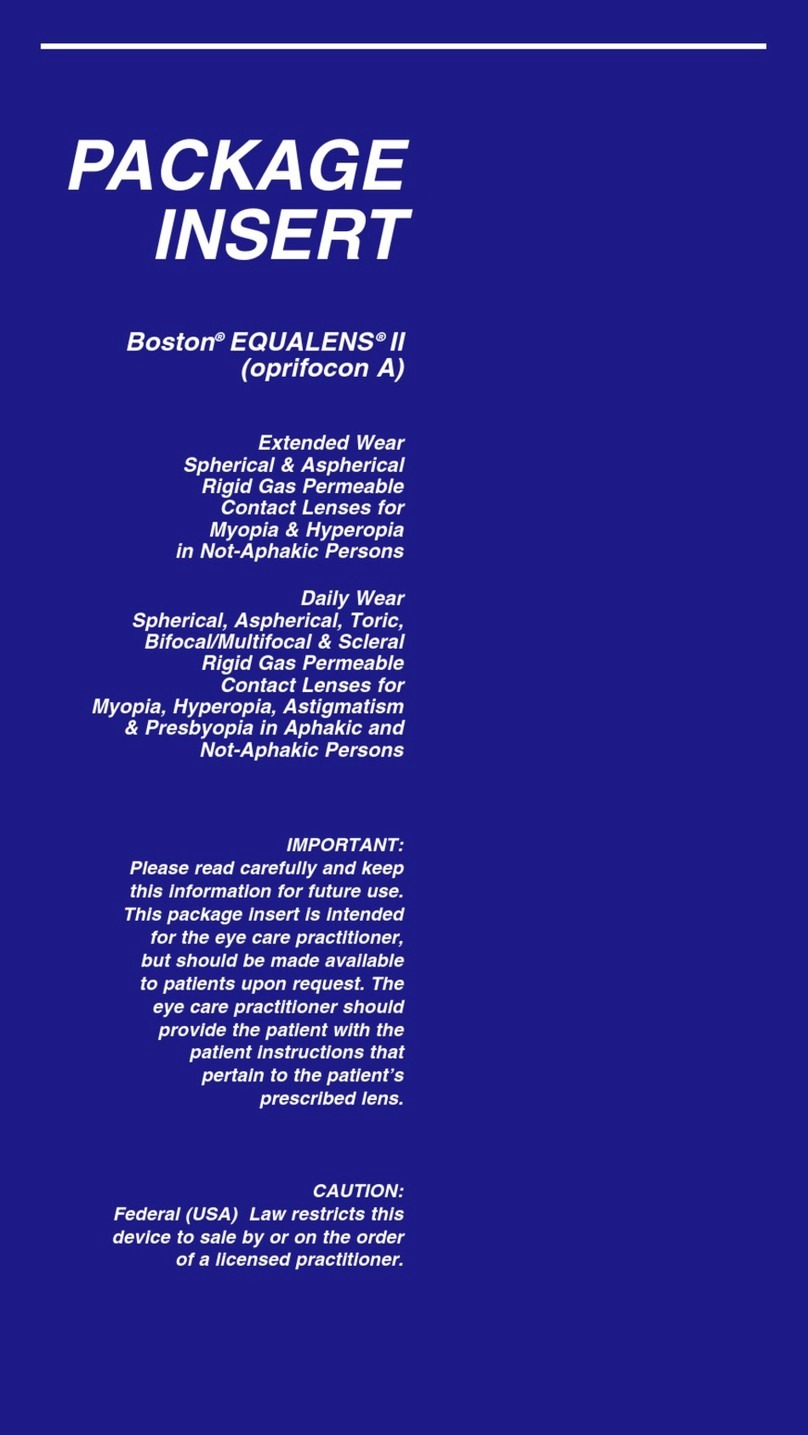
Bausch & Lomb
Bausch & Lomb Polymer Technology Boston Equalens II User manual

Bausch & Lomb
Bausch & Lomb Soflens daily disposable Toric hilafilcon B User manual
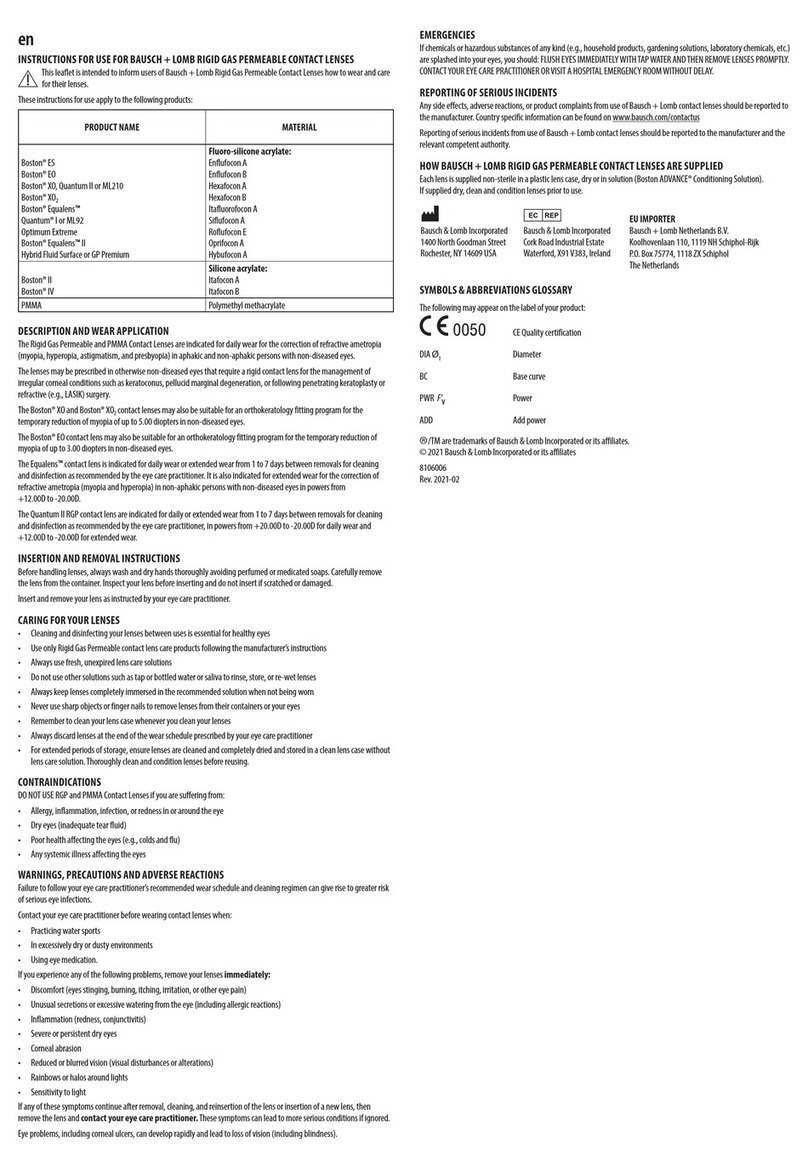
Bausch & Lomb
Bausch & Lomb Boston ES User manual
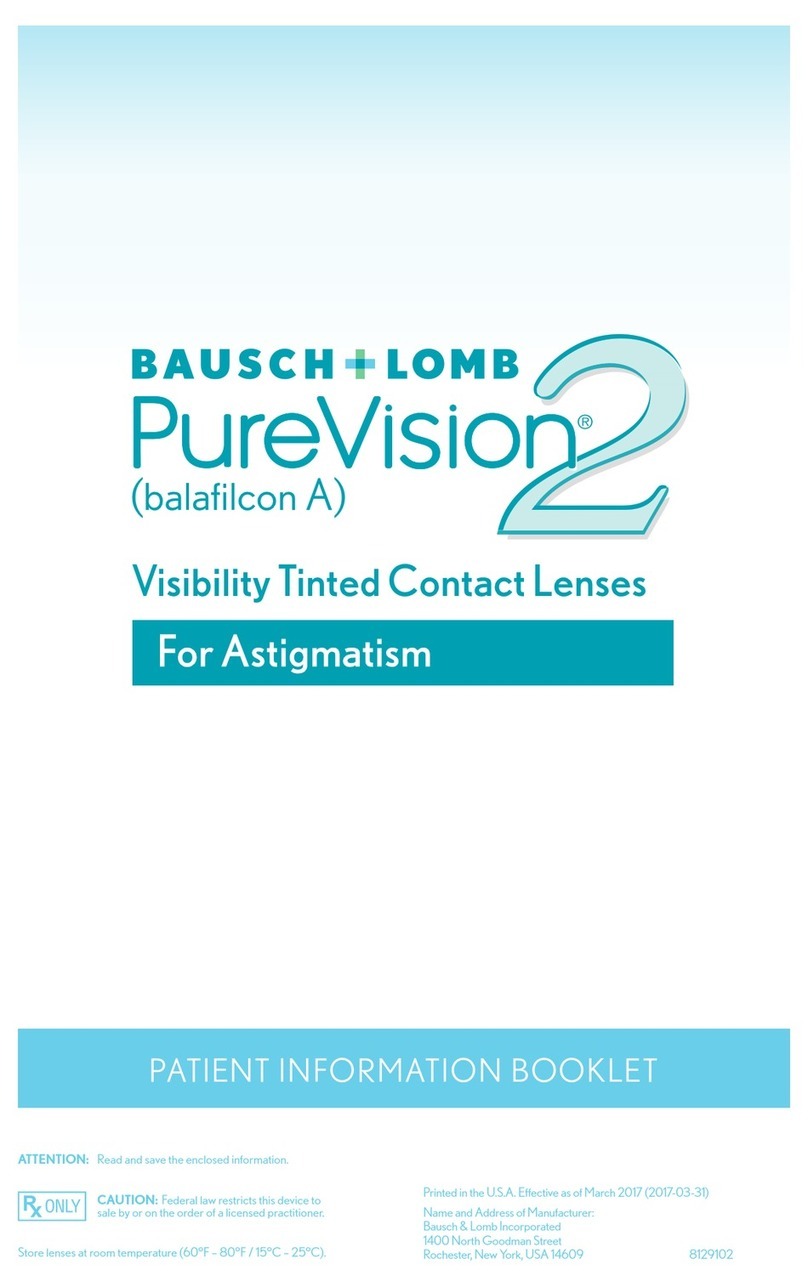
Bausch & Lomb
Bausch & Lomb PuerVision2 User manual

Bausch & Lomb
Bausch & Lomb SofLens 59 User manual
